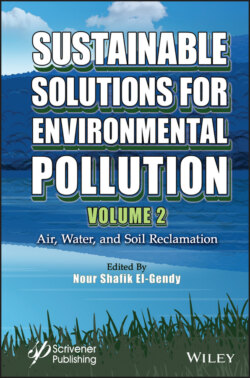Читать книгу Sustainable Solutions for Environmental Pollution, Volume 2 - Группа авторов - Страница 37
1.9.1 Carbon and Nutrients (N and P) Removal
ОглавлениеMacrophyte uptake of N and P is one of the processes involved in the removal of nutrients from wastewater. Removal of N and P will depend on the growth rate of the plant, the culture density, and environmental parameters such as solar radiation and temperature (Reddy and Tucker, 1983). Results from applications involving emergent plants on domestic effluent treatment have had varying results. A study from Van De Moortel et al. (2010) on the treatment of raw domestic effluent had N (including NH4) and P removal between 40% and 50%. This may be due to the low coverage that the vegetation had in the system (Van de Moortel et al., 2010). Weragoda et al. (2012) applied the FT-CW principles with two aquatic plant species (Typha angustifolia and Canna iridiflora). NH4 removal from domestic effluent varied between 50% and 85% for T. angustifolia and 58% and 81% for C. iridiflora (Weragoda et al., 2012). Total N (Ntot) removal in the CW types studied by Vymazal (2007) varies between 40% and 50%, with the load removed ranging between 250 and 630 g N/(m2 yr) depending on the CW type and inflow loading. In fact, the total elimination of nitrogen pollution requires both aerobic and anaerobic conditions at the same time on contiguous areas. Single flow type CWs cannot achieve high Ntot removal due to their inability to provide these conditions at the same time. Vertical flow CWs successfully remove NH4, but their denitrification capacity is very limited. On the other hand, horizontal flow CWs provide good denitrification conditions, but their ability to nitrify ammonia is very limited. Therefore, it is necessary to combine different flow types of CWs in a hybrid system in order to exploit the specific advantages of each flow type individually and ensure maximum elimination of nitrogen pollution (Vymazal, 2007). In SSF-CWs, nutrients removal by plants is usually considered to be negligible (10% of the N load and 5% for the P load). However, in case of low inflow loadings (i.e., 200–500 g N/m2/yr and 50–100 g P/m2/yr, with high stands of emergent biomass, much higher removal (around 60% for N and P) can be achieved (Vymazal, 2020). A full-scale 20-year-old surface-flow CWs treating agricultural was monitored over a 2-year-long period by (Lavrnić et al., 2020b). In this well-established system, high retention was observed for TSS (82%) and N (78%), but it was rather mediocre for P (27%). This negative value became positive when the input of nutrients by rainfall was included in the mass balance.
